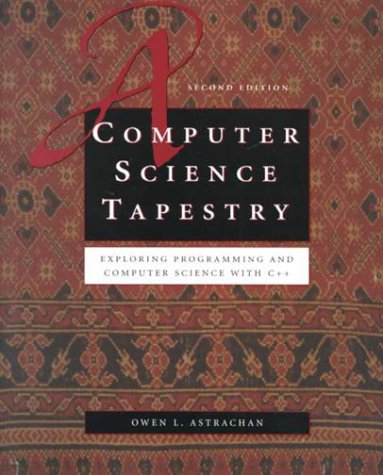
A Computer Science Tapestry: Exploring Computer Science with C++
by Owen L. Astrachan
Publisher: McGraw - Hill 1999
ISBN/ASIN: 0072322039
ISBN-13: 9780072322033
Number of pages: 879
Description:
This book is designed for a first course in computer science that uses C++ as the language by which programming is studied. The goal has not been to cover the syntax of a large language like C++, but to leverage the best features of the language using sound practices of programming and pedagogy in the study of computer science and software design.
Download or read it online for free here:
Download link
(4.4MB, PDF)
Similar books
 Concepts, Techniques, and Models of Computer Programming
Concepts, Techniques, and Models of Computer Programmingby Peter Van Roy, Seif Haridi - The MIT Press
Covered topics: concurrency, state, distributed programming, constraint programming, formal semantics, declarative concurrency, message-passing concurrency, forms of data abstraction, building GUIs, transparency approach to distributed programming.
(25928 views)
 Insight into Theoretical and Applied Informatics
Insight into Theoretical and Applied Informaticsby Andrzej Yatsko, Walery Suslow - De Gruyter Open
The objective of this book is to provide the reader with all the necessary elements to get him or her started in the modern field of informatics and to allow him or her to become aware of the relationship between key areas of computer science.
(6599 views)
 CS for All
CS for Allby Christine Alvarado, et al. - Harvey Mudd College
Our objective is to provide an introduction to computer science as an intellectually vibrant field rather than focusing exclusively on computer programming. We emphasize concepts and problem-solving over syntax and programming language features.
(12133 views)
 Foundations of Computer Science
Foundations of Computer Scienceby Hans-Peter Bischof
This text is an introduction to the formal study of computation. The course will provide students with a broad perspective of computer science and will acquaint them with various formal systems on which modern computer science is based.
(13305 views)